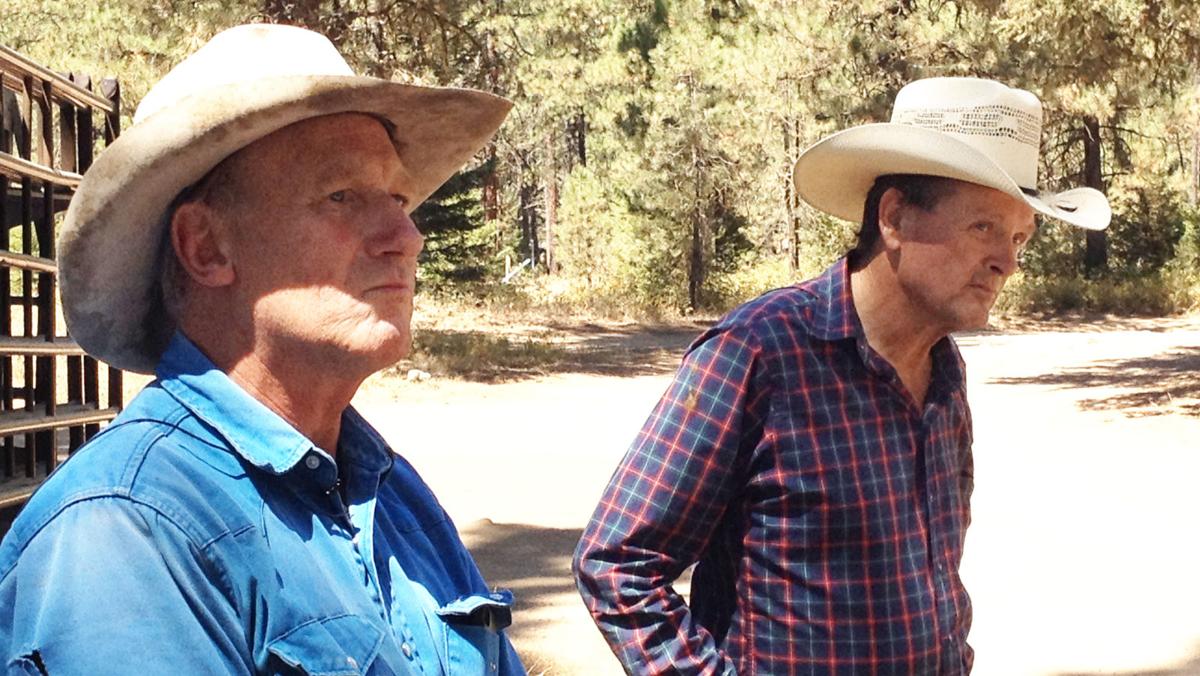Ellensburg rancher Kayser doesn't welcome animals but monitors them
CLE ELUM — Like anyone whose livelihood is subject to the kindnesses and cruelties of Mother Nature, Sam Kayser is a pragmatist.
When
wolves became a fixture on the very Teanaway landscape over which he
had been grazing cattle for nearly two decades, the Ellensburg cattleman
wasn’t pleased.
He was, yes, pragmatic.
When the Washington Department of Fish
and Wildlife came up with agreements calling for livestock producers to
employ state-approved, non-lethal means to minimize wolf-livestock
conflicts in exchange for financial consideration should that predation
occur, many ranchers were adamantly opposed.
Not Kayser. He was the first to sign the agreement. For a while, in fact, he was the only cattleman in the state to do so.
Did that cost him any friendships around the state’s cattle industry?
“I
never got in any fistfights at the cattleman’s association,” Kayser
cracked in his folksy twang. “Yeah, there’s some hard feelings, but as
far as I know it’s still America.”
Washington
Cattleman’s Association executive director Jack Field had been part of
the wolf working group that helped craft the agreement, and while the
association clearly didn’t like the idea of wolves returning to
Washington, it recommended its members sign the agreements.
Their
argument: Wolves were coming, and doing nothing won’t change that.
Being proactive — and pragmatic — will at least make the transition less
traumatic.
“They needed somebody to sign
up for it, and I signed up for it,” Kayser said. “But I had other
producers tell me, ‘I think by signing that, you’re telling them it’s OK
for the wolves to kill your calves.’ I said, ‘If that’s the way you
feel, fine, but that isn’t the way I feel at all, that I’m giving the
wolves a blank check to have at ’em.
“But
we’re stuck with ’em, and I want to think that there’s room our here
for all of us. And that means wolves, and coyotes, and the 80 head of
deer that come in my hayfield every night.”
Kayser grinned, and added, “As long as they’re not elk, I’m willing to do it, because they look pretty cool out there.”
For
four years, Kayser’s cattle — he runs roughly 200 cows and their calves
annually in the Teanaway — coexisted with the wolves, in part because
of the presence of his experienced range rider, Bill Johnson.
Sooner or later, both Johnson and Kayser knew, they would lose an animal.
“A
predator, from what I’ve read and seen, they will probe a food source:
How difficult is this one going to be? Am I going to get my teeth
knocked out?” mused Johnson.
In recent
months, he added, when he’s been out moving cattle with his dogs, he has
occasionally seen a cow turn around and bite at any dog that gets too
close.
“And I think,” Johnson said, “that’s because they’ve been probed by the wolves.”
Two weeks ago, the wolves killed and feasted upon one of Kayser’s yearling steers.
But just a week after that loss, when
WDFW officials asked Kayser if he’d be willing to discuss with media
members his continued willingness to employ the state’s predation
deterrents, Kayser did so.
“I’m not
excited about it, but (wolves) are coming back whether I’m excited about
it or not, so we’ve got to figure out how to deal with it,” Kayser
said. “We’ve been doing it four or five years and we just had the one
problem last week — but that doesn’t mean the program is a failure, (if)
after five or six years you have one predator that doesn’t realize the
bounds.
“To say it’s never going to
happen is wrong, but I don’t think it’s the end of the world. By the
same token, I might not be so philosophical about it if Fish and
Wildlife was not willing to compensate us for them. And one’s a lot
different than five or six.”
Kayser
expressed empathy for the livestock producers in northeastern
Washington, where numerous wolves among the area’s dozen verified wolf
packs have attacked livestock. One pack, the Wedge, was removed by WDFW
sharpshooters after repeated cattle predation, though two wolves —
perhaps dispersers from other packs or offspring of killed Wedge Pack
members — are still in the same area.
As
long as they’re not giving him as much grief as wolves are doing to
Stevens County cattlemen, Kayser remains philosophical. Asked why people
have such a visceral reaction to wolves — as opposed to, say, cougars —
he said he doesn’t believe he’s qualified to answer.
“I
think we’ve seen movies at the movie theater about wolves and how
vicious they are or whatever. Maybe they’re less stealthy,” he said. “I
guess it’s bothersome that they run in packs.
“Because
they’re just like teenaged kids: Two together, that’s fine. You get
three, you start getting nervous and when there’s five, there’s gonna be
trouble.”
Coincidentally, the number of wolves in the Teanaway Pack at last count is five.



No comments:
Post a Comment